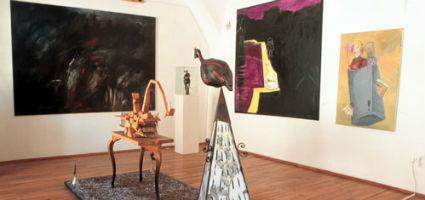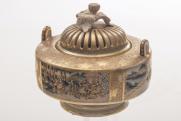 |
Address: 8000, Székesfehérvár Megyeház u. 17.
Phone number: (22) 329-504, (22) 315-583
E-mail: titkarsag@szikm.hu
Opening hours: Temporarily closed.
|
|
Ticket for adults
|
700 HUF
|
/ capita
|
|
Group ticket for adults
(min. 10 people)
|
600 HUF
|
/ capita
|
|
Ticket for students
|
350 HUF
|
/ capita
|
|
Group ticket for students
(min. 10 people)
|
250 HUF
|
/ capita
|
|
Ticket for pensioners
|
350 HUF
|
/ capita
|
|
Group ticket for pensioners
(min. 10 people)
|
250 HUF
|
/ capita
|
|
Ticket for families
(2 adults + min. 1 child)
|
1500 HUF
|
/ family
|
|
Group guide for adults
(min. 25 people)
|
6100 HUF
|
/ group
|
|
Group guide for adults
(from over 26 people)
|
7200 HUF
|
/ group
|
|
Group guide for students
(min. 25 people)
|
2800 HUF
|
/ group
|
|
Group guide for students
(from over 26 people)
|
3500 HUF
|
/ group
|
|
Group guide for pensioners
(min. 25 people)
|
2800 HUF
|
/ group
|
|
Group guide for pensioners
(from over 26 people)
|
3500 HUF
|
/ group
|
|
Group guide
(min. 20 people)
|
8300 HUF
|
/ group
|
|
Group guide
(from over 26 people)
|
9500 HUF
|
/ group
|
The Szent István Museum' applied art collection is to be shown in an interesting manner through Eastern ceramics, which have been included in exhibitions before but have not been shown together for the audience before.
Looking at some of the exotic motifs, many of us may ponder weather it is "Chinese" or "Japanese porcelain". However, it is so distant and unknown to most of us that we do not have any deeper suggestion. We want to give at our small exhibition a short introduction to oriental ceramics, to acquaint our visitors with the materials and the original function of the objects.
Perhaps it is a little known fact that in the 19th century influenced by World Expos "East fever" flooded Europe. Eastern items came into vogues, including fine china as well. Oriental porcelain purchased at high price was present in the homes and parlour suite of aristocrats, wealthy citizens' homes. This need is fulfilled on one hand the porcelain specifically made for the European market from Japan and China, and the cheaper imitation of these made in Europe. Our exhibition is highlighting the history of these as well.
The oriental porcelain presented in the exhibition are mainly from the Szent István Király Museum' fine art collection as well as the Municipal Art Gallery – Deák Collection and the Budapest Hopp Ferenc East Asian Art Museum.
The curator of the exhibition is:: Dr. The sinologist Fajcsák Györgyi, director of Hopp Ferenc East Asian Art Museum.


